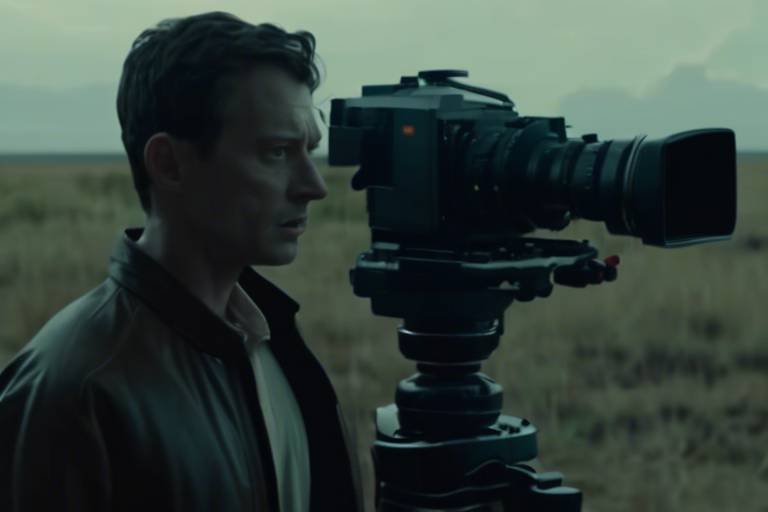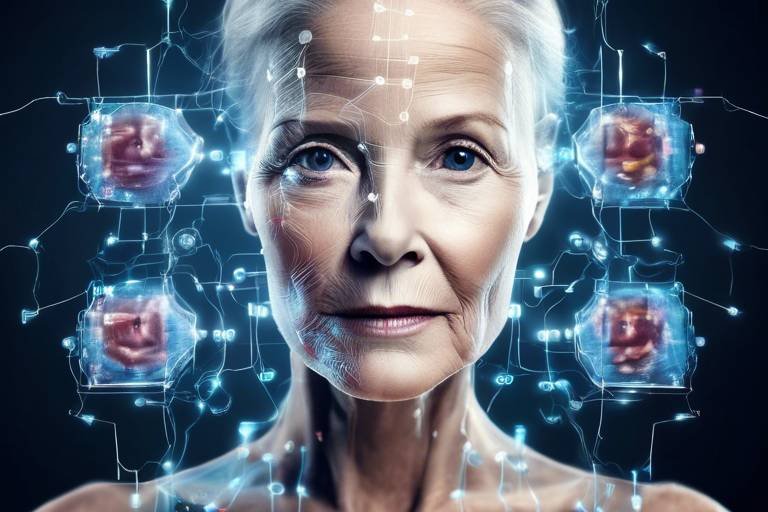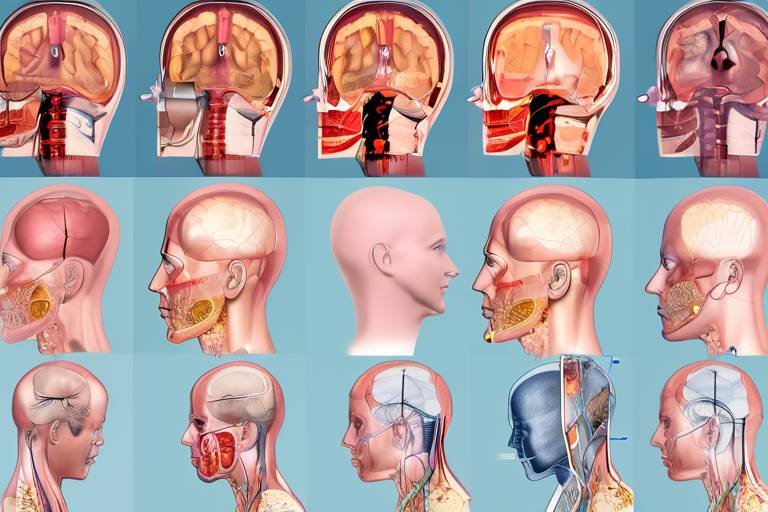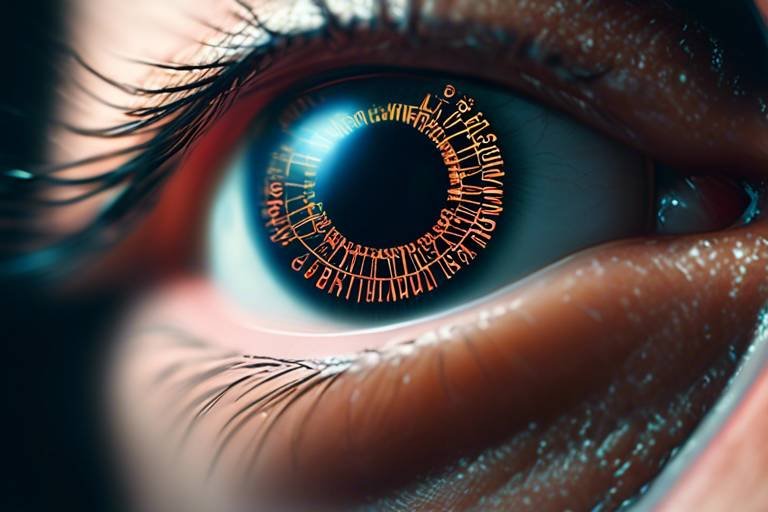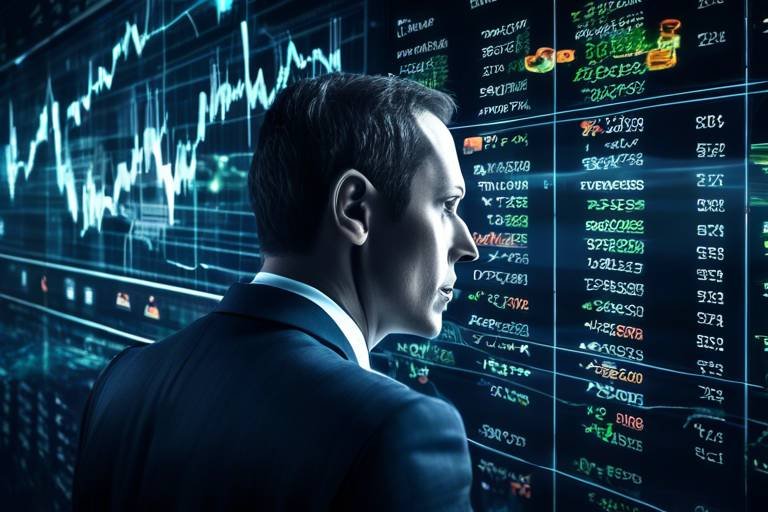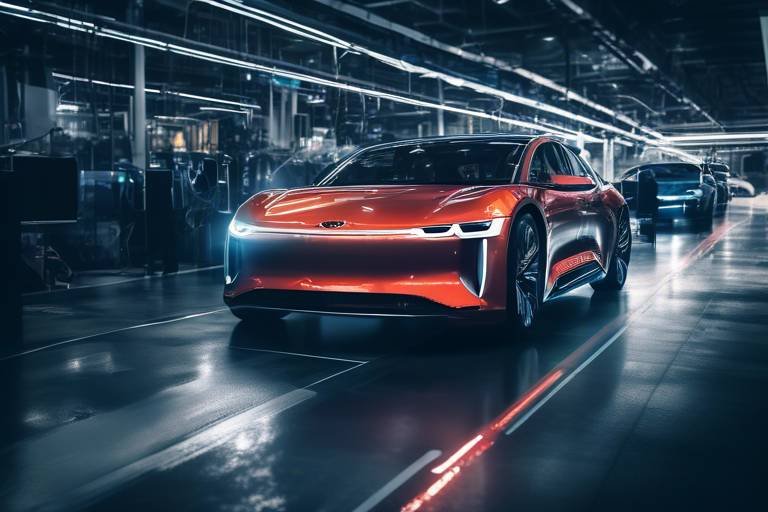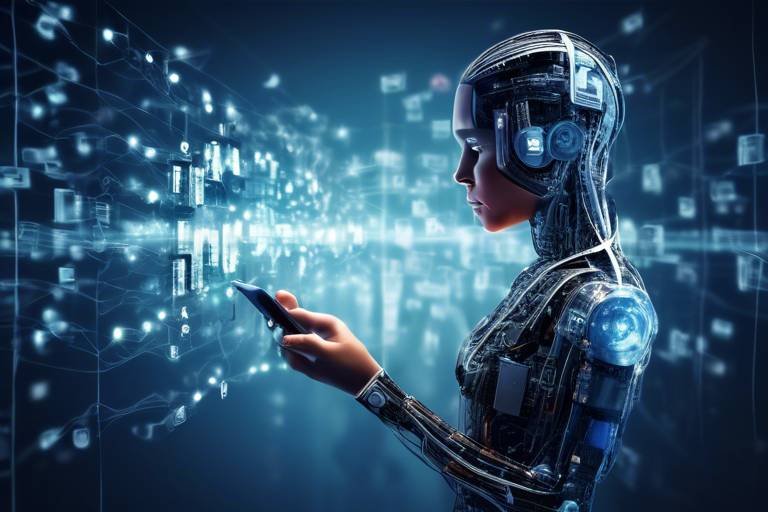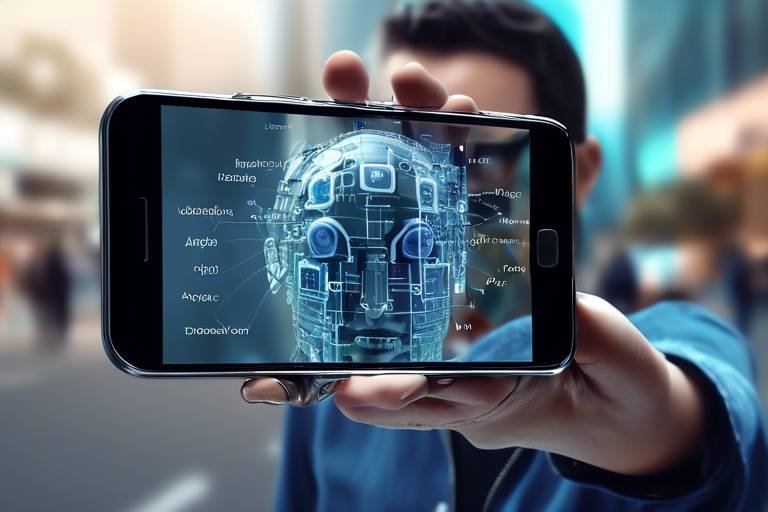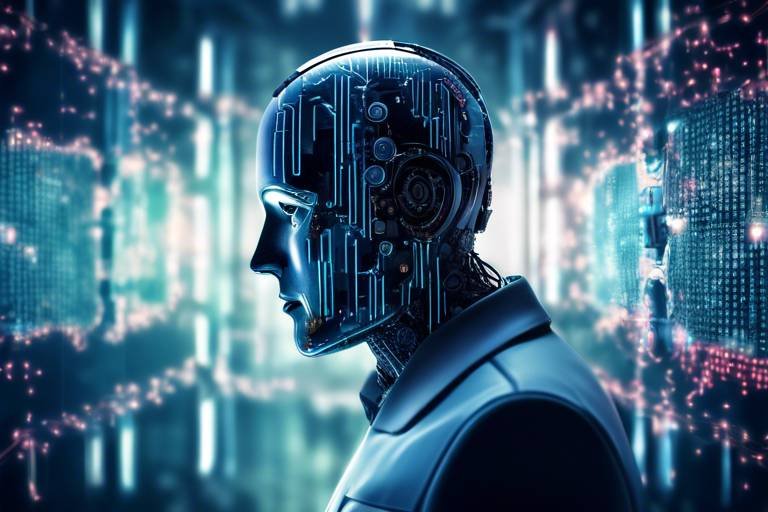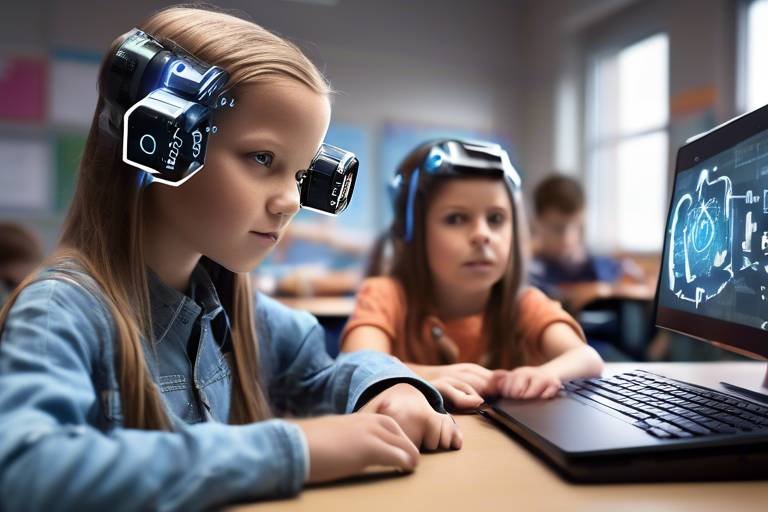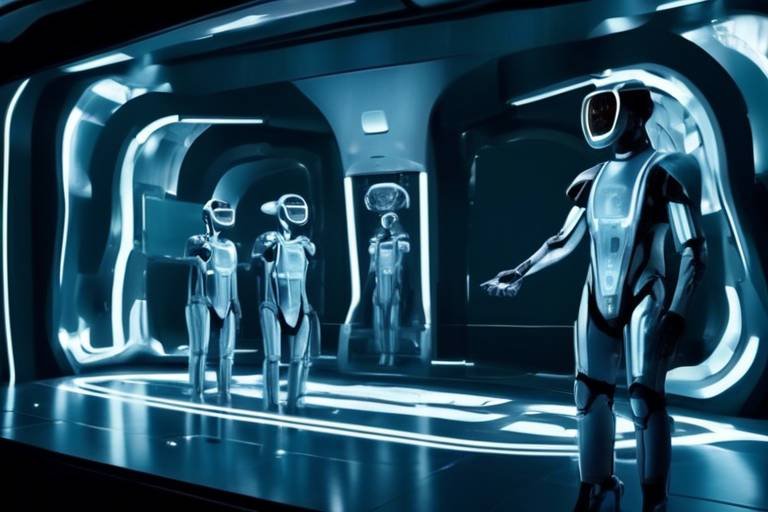AI in Modern Cinematography: Changing the Game
In an era where technology is advancing at lightning speed, the world of cinematography is undergoing a breathtaking transformation, largely fueled by the rise of artificial intelligence (AI). This powerful technology is not just a buzzword; it’s a game-changer that is reshaping how films are made, viewed, and experienced. Imagine a world where cameras can think for themselves, where editing is done in the blink of an eye, and where scripts are crafted with the help of intelligent algorithms. Sounds like science fiction, right? But it’s happening now, and it’s changing the way filmmakers tell stories.
AI is making waves across the film industry, enhancing the creative process and allowing filmmakers to push the boundaries of their imagination. From the moment a script is penned to the final cut of a film, AI is there, providing tools and insights that were once unimaginable. It’s like having a creative partner who never sleeps—always ready to assist, analyze, and optimize every aspect of filmmaking. This article delves into how AI is revolutionizing cinematography, from smarter camera technology to personalized viewer experiences, all while examining the implications for the future of the industry.
As we explore the transformative role of AI in cinematography, we will uncover how these advancements are not only improving the technical aspects of film production but also enhancing the art of storytelling itself. With AI, filmmakers can focus more on their creative vision while leaving the heavy lifting to machines that are designed to learn and adapt. So, buckle up and get ready for a journey through the exciting intersection of technology and creativity in modern cinematography!
The first area where AI is making a significant impact is in camera technology. Gone are the days when cinematographers had to manually adjust camera settings for every shot. With the advent of AI, cameras are becoming smarter, capable of automatically adjusting settings based on the environment and the subjects being filmed. Imagine a camera that can recognize a face and automatically focus on it while adjusting exposure and lighting conditions in real-time. This not only saves time but also enhances the overall quality of the footage.
Moreover, these intelligent cameras can track subjects with remarkable precision, ensuring that every movement is captured flawlessly. This technology allows filmmakers to experiment with dynamic shots that were previously challenging to execute. With AI, the cinematographic process becomes more fluid, allowing for greater creativity and innovation in visual storytelling.
When it comes to visual effects, AI is truly a game-changer. The process of creating stunning visuals has traditionally been time-consuming and labor-intensive. However, AI is streamlining this process, enabling artists to produce breathtaking imagery with greater efficiency and creativity. Imagine being able to create complex visual effects without spending countless hours in post-production. AI-driven tools can assist artists by automating repetitive tasks, allowing them to focus on the creative aspects of their work.
Editing is another area where AI is making waves. AI-driven editing tools are transforming the way filmmakers approach post-production. Instead of sifting through hours of footage, filmmakers can now rely on AI to assemble the best shots quickly. This not only speeds up the editing process but also ensures that the final cut aligns more closely with the director's vision.
AI algorithms can analyze footage and identify key scenes, making it easier for editors to organize and select the best shots for the final cut. This intelligent scene recognition is akin to having a personal assistant who knows exactly what you need and when you need it. It simplifies the editing workflow and allows editors to focus on crafting a compelling narrative.
Color grading is yet another area where AI is making a significant impact. AI technologies are revolutionizing color grading by offering automated suggestions and adjustments. This ensures that the visual tone aligns perfectly with the film's narrative, creating a more immersive experience for the audience. It’s like having a colorist who can instantly adapt to the mood of each scene, enhancing the emotional resonance of the film.
AI is also paving the way for personalized viewing experiences. By analyzing audience preferences and behaviors, filmmakers can tailor content to meet the specific tastes of different viewer segments. This level of customization enhances engagement and satisfaction, making viewers feel like the content was made just for them. It’s a win-win situation—audiences get to enjoy films that resonate with them, while filmmakers can maximize their reach and impact.
Artificial intelligence is increasingly being used in scriptwriting, helping writers generate ideas, structure narratives, and even predict audience reactions to various plot developments. Imagine having a brainstorming partner who can suggest unique storylines based on existing films and popular themes within the industry. AI tools can assist writers in developing engaging narratives that captivate audiences from the very first scene.
By leveraging vast databases of film history and audience preferences, AI can provide inspiration that sparks creativity and innovation in the writing process. This means that writers can focus on what they do best—crafting compelling stories—while AI handles the heavy lifting of idea generation.
Additionally, AI's predictive analytics capabilities allow filmmakers to gauge which scripts are likely to resonate with audiences. By analyzing data from past films, AI can guide filmmakers in their creative decisions, helping them avoid potential pitfalls and steering them towards success. It’s like having a crystal ball that reveals what audiences want to see, enabling filmmakers to create content that truly connects.
As AI continues to evolve, its integration into cinematography promises to reshape the industry in profound ways. The future of filmmaking will be characterized by unprecedented levels of creativity and innovation, as AI opens new avenues for storytelling. However, this technological revolution also challenges traditional filmmaking practices, forcing filmmakers to adapt and rethink their approaches. Are we ready for a future where machines play a significant role in the creative process? Only time will tell, but one thing is for sure: the landscape of cinematography is changing, and AI is at the forefront of this exciting evolution.
- How is AI changing cinematography? AI is revolutionizing cinematography by enhancing camera technology, streamlining visual effects, and automating editing processes, making filmmaking more efficient and creative.
- Can AI help in scriptwriting? Yes, AI can assist writers in generating ideas, structuring narratives, and predicting audience reactions, making the scriptwriting process more dynamic.
- What are the benefits of AI in film production? The benefits include faster production times, improved visual quality, personalized viewer experiences, and enhanced storytelling capabilities.
- Will AI replace human filmmakers? While AI will play a significant role in filmmaking, it is unlikely to replace human creativity. Instead, it will serve as a tool that enhances the creative process.

Revolutionizing Camera Technology
Artificial Intelligence (AI) is not just a buzzword; it’s becoming a pivotal force in the realm of cinematography. Imagine a world where cameras are not merely tools but intelligent companions that enhance the storytelling process. With AI advancements, we are witnessing the emergence of smarter cameras that can automatically adjust settings, track subjects, and enhance image quality. This transformation is not just a minor upgrade; it's a complete overhaul of how filmmakers approach their craft.
These AI-driven cameras come equipped with features that allow them to analyze scenes in real-time. For instance, they can detect lighting conditions and automatically adjust exposure settings, ensuring that every shot is perfectly lit. This level of automation frees up cinematographers to focus on the creative aspects of filmmaking rather than getting bogged down by technicalities. As a result, the cinematographic process becomes more fluid and efficient, allowing for greater artistic expression.
Moreover, AI technology is enhancing the camera's ability to track subjects dynamically. Imagine a chase scene where the camera effortlessly follows the action, maintaining focus on the characters while blurring the background. This is not just a dream; it’s a reality made possible by sophisticated algorithms that predict movement and adjust accordingly. This capability not only elevates the visual quality of the film but also immerses the audience in the narrative, making them feel as though they are part of the action.
To illustrate the impact of AI on camera technology, let’s take a look at some of the key features that are revolutionizing the industry:
| Feature | Description |
|---|---|
| Auto-Adjustment | Cameras adjust settings like ISO, aperture, and shutter speed in real-time based on environmental conditions. |
| Subject Tracking | Advanced algorithms allow cameras to follow subjects seamlessly, ensuring they remain in focus during dynamic scenes. |
| Image Enhancement | AI enhances image quality by reducing noise and improving clarity, resulting in stunning visuals. |
As we delve deeper into the world of AI in cinematography, it’s essential to recognize that these technologies are not just about making things easier; they are about enhancing creativity. Filmmakers can experiment with new angles and shots without the fear of technical failure. The camera becomes an extension of their vision, capable of executing complex movements that would have been challenging to achieve manually.
In conclusion, the revolution in camera technology driven by AI is paving the way for a new era in filmmaking. As these intelligent systems continue to evolve, we can only imagine the incredible stories that will be told through the lens of these advanced cameras. The future of cinematography is bright, and it’s being illuminated by the brilliance of artificial intelligence.

Enhancing Visual Effects
Artificial intelligence is not just a buzzword in the film industry; it’s a powerful tool that is streamlining the creation of visual effects like never before. Imagine a world where artists can focus more on their creativity without getting bogged down by the tedious technical aspects of post-production. With AI, this dream is becoming a reality! By automating various processes, AI allows visual effects artists to produce stunning imagery with greater efficiency and creativity.
One of the most exciting developments is the ability of AI to analyze vast amounts of data quickly. This capability enables artists to experiment with different visual styles and effects without the traditional constraints of time and resources. For example, AI algorithms can generate realistic simulations of natural phenomena, like water or fire, which would have taken hours of manual work. The result? A more dynamic and visually captivating film that keeps audiences on the edge of their seats.
Moreover, AI tools can assist in the integration of visual effects into live-action footage, making it easier to blend the two seamlessly. The traditional methods often required extensive manual adjustments, but AI can now automatically adjust lighting, shadows, and colors to ensure that the effects look as if they were part of the original scene. This not only saves time but also enhances the overall quality of the final product.
To illustrate the impact of AI on visual effects, consider the following table that highlights the differences between traditional methods and AI-enhanced techniques:
| Aspect | Traditional Methods | AI-Enhanced Techniques |
|---|---|---|
| Time Required | Hours to days | Minutes to hours |
| Resource Intensity | High (manual labor) | Lower (automated processes) |
| Creativity | Limited by technical skills | Enhanced by AI suggestions |
| Final Quality | Variable | Consistently high |
As we delve deeper into the world of AI in visual effects, we also discover its role in collaborative creativity. AI tools can analyze existing films and suggest new effects that align with current trends and audience preferences. This data-driven approach not only inspires artists but also ensures that the visual effects resonate with viewers, making every frame a feast for the eyes.
In conclusion, the integration of AI into visual effects is nothing short of revolutionary. It empowers artists to push the boundaries of creativity while ensuring that the technical execution is seamless and efficient. The future of visual storytelling looks brighter than ever, and as AI continues to evolve, we can only imagine the stunning visuals that await us in the next wave of cinematic masterpieces.
- How is AI changing the visual effects industry? AI is automating many tasks that were previously manual, allowing artists to focus more on creativity and less on technical details.
- Can AI create visual effects on its own? While AI can assist in generating effects, human creativity and oversight are still essential for crafting compelling visuals.
- What are the benefits of using AI in visual effects? Benefits include reduced production time, lower resource use, and enhanced quality of the final product.

Automated Editing Processes
In the fast-paced world of filmmaking, time is of the essence. Traditional editing can be a painstaking process, often taking weeks or even months to finalize a film. But with the emergence of AI-driven editing tools, this is quickly becoming a thing of the past. Imagine having a virtual assistant that can sift through hours of footage, identifying the best shots and assembling them into a coherent narrative. This is not just a dream; it's a reality that many filmmakers are now embracing.
AI technology has made it possible to automate many aspects of the editing process, allowing filmmakers to focus more on their creative vision rather than getting bogged down in the minutiae of editing. For instance, AI can analyze the footage and suggest the most impactful scenes based on various parameters like emotional tone, visual composition, and pacing. This means that editors can spend less time searching for the right clips and more time crafting a compelling story. The result? A more efficient workflow that can significantly reduce the overall production timeline.
One of the standout features of these automated editing systems is intelligent scene recognition. Through advanced algorithms, AI can categorize and tag scenes based on content, making it easier for editors to find exactly what they need. For example, if a director is looking for a specific emotional moment, they can simply input their criteria, and the AI will present them with the most relevant clips. This not only saves time but also enhances the creative process by allowing editors to explore various options without the tedious manual sorting.
Moreover, AI-driven tools are capable of executing precise cuts that align with the director's vision. They can analyze the rhythm of the film and make suggestions that keep the pacing intact, ensuring that the final product flows seamlessly. This level of precision is something that would be incredibly time-consuming for a human editor to achieve alone. In many cases, the AI can even learn from the editor's past decisions, adapting its suggestions to better match the desired style and tone of the film.
To illustrate the impact of AI on editing, consider the following table that highlights the key advantages:
| Feature | Traditional Editing | AI-Driven Editing |
|---|---|---|
| Time Efficiency | Weeks to Months | Days to Weeks |
| Scene Identification | Manual Search | Automated Recognition |
| Cut Precision | Subjective Decisions | Data-Driven Suggestions |
| Adaptability | Static Techniques | Learning Algorithms |
In conclusion, the integration of AI in the editing process is not just a technological advancement; it represents a fundamental shift in how films are made. As filmmakers harness these tools, they can expect to see not only a reduction in editing time but also an enhancement in the overall quality of their work. The future of film editing is here, and it's automated, intelligent, and incredibly exciting.
- How does AI improve the editing process? AI improves the editing process by automating scene recognition, suggesting cuts, and categorizing footage, which saves time and enhances creativity.
- Can AI replace human editors? While AI can streamline many tasks, human editors bring a unique creative vision that AI cannot replicate. The best results often come from a collaboration between AI tools and skilled professionals.
- What are some popular AI editing tools? Some popular AI editing tools include Adobe Premiere Pro's Sensei, Magisto, and Filmora, which all incorporate AI features to assist in the editing process.

Intelligent Scene Recognition
Imagine a world where your camera not only captures moments but also understands them. is a groundbreaking advancement in AI technology that brings us closer to this reality. By leveraging powerful algorithms, AI can analyze footage in real time, identifying key scenes, objects, and even emotions. This capability is akin to having a highly skilled assistant who can sift through hours of footage and pinpoint the most compelling shots, saving editors an incredible amount of time and effort.
So, how does this work? Well, AI uses a combination of machine learning and computer vision to interpret visual data. It examines various elements within a scene, such as lighting, movement, and composition, to categorize and prioritize shots. For instance, if a filmmaker captures a dramatic moment of a character's emotional breakdown, the AI can recognize this pivotal scene and flag it for the editor. This not only enhances the editing process but also ensures that no significant moment is overlooked.
Furthermore, the benefits of intelligent scene recognition extend beyond mere organization. It allows filmmakers to focus on storytelling rather than the tedious task of sorting through footage. With AI doing the heavy lifting, directors can spend more time crafting their narrative and less time worrying about logistics. This shift in focus can lead to a more dynamic and engaging film, as the creative team can dedicate their energy to the art of storytelling.
To illustrate the impact of intelligent scene recognition, consider the following table that outlines its key advantages:
| Advantage | Description |
|---|---|
| Efficiency | Reduces the time spent on footage organization and selection. |
| Accuracy | Minimizes the risk of missing crucial scenes during editing. |
| Creativity | Allows filmmakers to focus on narrative development and artistic expression. |
| Collaboration | Facilitates better communication between directors and editors by providing clear scene identification. |
In essence, intelligent scene recognition is not just a technological marvel; it is a transformative tool that is reshaping the landscape of cinematography. As AI continues to evolve, we can expect even more sophisticated features that will further enhance the filmmaking process. This technology is not just about making things easier; it’s about unlocking new realms of creativity and storytelling potential. And the best part? It’s just the beginning of what AI can offer in the world of film.
- What is intelligent scene recognition?
Intelligent scene recognition is an AI-driven technology that analyzes footage to identify key scenes, objects, and emotions, streamlining the editing process. - How does AI improve the editing process?
AI enhances editing by quickly sorting through footage, allowing editors to focus on storytelling rather than logistics. - Can intelligent scene recognition miss important moments?
While AI is highly accurate, it is still essential for human editors to review flagged scenes to ensure no critical moments are overlooked. - Is this technology available to independent filmmakers?
Yes, many AI editing tools are becoming more accessible, allowing independent filmmakers to leverage these advancements in their projects.

Color Grading Innovations
Color grading has traditionally been a meticulous and often time-consuming process in filmmaking, requiring a keen eye for detail and a deep understanding of color theory. However, with the rise of artificial intelligence, this crucial aspect of cinematography is undergoing a remarkable transformation. AI technologies are revolutionizing color grading by offering automated suggestions and adjustments that align with the film's narrative, allowing filmmakers to achieve their desired visual tone more efficiently than ever before.
Imagine a world where color grading is not just a labor-intensive task but a collaborative dance between human creativity and machine intelligence. AI tools analyze the footage and provide color palettes that not only enhance the visual appeal but also evoke specific emotions, ensuring that every frame resonates with the audience. This synergy between technology and artistry is akin to a painter using an advanced brush that knows how to blend colors perfectly, enabling them to focus on the creative aspects rather than the technicalities.
Furthermore, AI-driven color grading systems can learn from previous projects, adapting to the unique style and preferences of individual filmmakers. This means that over time, these systems become more intuitive, providing increasingly accurate recommendations that reflect the director's vision. For instance, an AI tool might suggest a warmer color tone for a romantic scene or cooler hues for a tense moment, all based on data analysis and learned patterns from countless films.
To illustrate the impact of AI in color grading, consider the following table that highlights some key innovations:
| Innovation | Description |
|---|---|
| Automated Color Matching | AI tools can match colors across different shots, ensuring consistency in visual storytelling. |
| Real-time Adjustments | Filmmakers can see color grading changes in real-time, facilitating immediate feedback and adjustments. |
| Emotion Detection | AI analyzes scenes to suggest color adjustments that evoke specific emotions, enhancing audience engagement. |
| Style Transfer | AI can apply the color grading style of one film to another, allowing for creative experimentation. |
As we delve deeper into the future of cinematography, it's clear that AI's role in color grading is just the tip of the iceberg. Filmmakers are now equipped with tools that not only save time but also expand their creative horizons, allowing them to focus on what truly matters: telling compelling stories. The integration of AI in color grading is not just a trend; it's a fundamental shift that empowers filmmakers to push the boundaries of visual storytelling.
- What is color grading? Color grading is the process of altering and enhancing the color of a motion picture or image.
- How does AI improve color grading? AI improves color grading by providing automated suggestions, ensuring consistency, and allowing real-time adjustments.
- Can AI tools learn from previous projects? Yes, AI tools can learn individual filmmakers' styles and preferences over time, making them more intuitive.
- What are some benefits of using AI in cinematography? Benefits include increased efficiency, enhanced creativity, and the ability to achieve desired visual tones more effectively.

Personalized Viewer Experiences
In today's fast-paced world, where attention spans are shorter than ever, have become a game changer in the film industry. Imagine watching a movie that feels like it was tailor-made just for you! With the power of artificial intelligence, filmmakers can now analyze audience preferences, behaviors, and even emotional responses to create content that resonates on a deeper level. This is not just about throwing in a few familiar tropes; it's about crafting narratives that speak directly to the viewer's heart and mind.
AI algorithms can sift through vast amounts of data, identifying trends and preferences that help filmmakers understand what really captivates their audience. For example, if a viewer consistently enjoys thrillers with strong female leads, AI can suggest similar films or even help in creating narratives that align with these preferences. This level of customization enhances engagement and satisfaction, making viewers feel seen and valued. It's akin to having a personal curator who knows your tastes better than you do!
Moreover, as AI technology continues to evolve, the potential for interactive storytelling becomes increasingly viable. Imagine a film that changes its plot based on your reactions or choices! This concept, often seen in video games, is making its way into cinema. By utilizing real-time data analysis, filmmakers can create dynamic stories that adapt to the viewer's emotional responses, leading to a unique experience every time you watch.
This shift towards personalization doesn't just benefit viewers; it also empowers filmmakers to push the boundaries of creativity. With AI handling the heavy lifting of data analysis, directors and writers can focus on what they do best: storytelling. They can experiment with new ideas, confident that AI will provide insights into how audiences might react, thereby reducing the risk of creative missteps.
In conclusion, the integration of AI in creating personalized viewer experiences is not just a trend; it’s a revolution. As we look ahead, it’s clear that the future of cinematography will be shaped by this technology, paving the way for films that are not only visually stunning but also deeply resonant with audiences. The possibilities are endless, and the excitement is palpable!
- How does AI personalize viewer experiences?
AI analyzes viewer data to tailor content recommendations and create narratives that align with audience preferences. - Can AI change a movie's plot based on viewer reactions?
Yes, emerging technologies allow for interactive storytelling that can adapt in real-time to audience responses. - What are the benefits of personalized viewing?
Personalized experiences enhance engagement, making viewers feel more connected to the content. - Will AI replace human creativity in filmmaking?
AI is a tool that supports creativity, allowing filmmakers to focus on storytelling while handling data analysis.

AI in Scriptwriting
Artificial intelligence is increasingly becoming a game-changer in the world of scriptwriting, offering writers a powerful toolkit to enhance their creative processes. Imagine having an assistant that can not only help you brainstorm ideas but also structure narratives and even predict how audiences might react to various plot twists. Sounds like science fiction, right? But it's happening right now!
One of the most exciting aspects of AI in scriptwriting is its ability to generate narrative ideas. Writers often find themselves staring at a blank page, struggling to come up with the next big idea. AI tools can step in here, providing inspiration based on existing films, popular themes, and even current trends in storytelling. For instance, an AI might analyze data from thousands of scripts and suggest unique plotlines that blend different genres or themes, sparking creativity that a writer might not have considered.
Moreover, AI can assist in structuring narratives. Once a writer has a basic idea, they can use AI to help outline the story, ensuring that it flows logically and maintains audience engagement. This is particularly useful for complex narratives with multiple characters and subplots. By analyzing successful films, AI can suggest optimal pacing and plot points that keep viewers on the edge of their seats.
Another fascinating application of AI in scriptwriting is its use of predictive analytics. By examining data from past films—box office performance, audience demographics, and viewer feedback—AI can forecast which scripts are likely to resonate with audiences. This means filmmakers can make more informed decisions about which stories to pursue, potentially increasing their chances of success. Imagine knowing that your script has a 75% chance of being a hit before you even start filming!
However, it’s important to note that while AI can enhance the scriptwriting process, it doesn’t replace the human touch. The emotional depth, character development, and unique voice that writers bring to their scripts are irreplaceable. Think of AI as a powerful tool in a writer’s toolkit—like a high-tech pen that can help you draft, edit, and polish your ideas, but it’s still up to the writer to infuse the script with heart and soul.
In summary, the integration of AI into scriptwriting is opening up exciting new possibilities. It empowers writers to be more creative, efficient, and data-driven, ultimately leading to stories that resonate more deeply with audiences. As we look to the future, it’s clear that AI will play an increasingly prominent role in shaping the narratives we see on screen.
- How does AI help in brainstorming ideas for scripts?
AI tools analyze existing films and popular themes to suggest unique storylines, helping writers overcome creative blocks. - Can AI predict the success of a script?
Yes, AI uses predictive analytics to analyze data from past films, helping filmmakers understand which scripts are likely to resonate with audiences. - Does AI replace human writers?
No, AI enhances the writing process but does not replace the emotional depth and unique voice that human writers bring to their scripts.

Generating Narrative Ideas
In the world of storytelling, the spark of inspiration can often feel elusive, like trying to catch smoke with your bare hands. This is where artificial intelligence (AI) steps in, acting as a creative partner for writers. Imagine having a brainstorming buddy who never runs out of ideas and can analyze countless narratives in a fraction of a second. AI tools are revolutionizing the way writers generate narrative ideas, providing them with a treasure trove of possibilities that they might not have considered otherwise.
These AI-driven platforms utilize vast databases of existing films, books, and scripts to identify patterns and themes that resonate with audiences. By analyzing elements such as character arcs, plot structures, and emotional beats, AI can suggest unique storylines that align with current trends or even predict what might capture the audience's attention in the future. For instance, a writer looking to craft a thrilling screenplay might input specific genres or themes, and the AI could generate a list of potential narrative ideas that blend popular tropes with fresh twists.
Moreover, AI can assist in the development of characters and settings, providing suggestions that enhance the depth of the story. Writers can input basic character traits or settings, and the AI can propose complex backgrounds or conflicts that enrich the narrative. This collaborative approach not only saves time but also sparks creativity, allowing writers to explore paths they might not have ventured down on their own. In a way, AI acts like a creative muse, nudging writers toward innovative ideas and helping them break through writer's block.
As we embrace this technology, it’s essential to remember that AI is not here to replace human creativity; instead, it serves as a tool that enhances it. The synergy between human intuition and AI's analytical prowess can lead to groundbreaking narratives that captivate audiences. By leveraging AI in the brainstorming process, writers can focus on what they do best—crafting compelling stories that resonate deeply with viewers.
- How does AI help in generating narrative ideas?
AI analyzes existing narratives to suggest unique storylines and character developments, providing inspiration and helping writers overcome creative blocks. - Can AI replace human creativity in storytelling?
No, AI is a tool that enhances human creativity, allowing writers to explore new ideas while focusing on crafting compelling narratives. - What types of stories can AI help generate?
AI can assist in generating a wide range of stories across various genres, including drama, comedy, sci-fi, and fantasy, by identifying popular themes and trends.

Predictive Analytics for Success
In the fast-paced world of filmmaking, understanding audience preferences is like having a secret map to treasure. Predictive analytics is that map, guiding filmmakers through the complex landscape of viewer interests and behaviors. By harnessing the power of data, filmmakers can make informed decisions that resonate with their target audience, ultimately leading to greater success at the box office. Imagine being able to predict which plot twists will leave audiences on the edge of their seats or which character arcs will tug at their heartstrings. That's the magic of predictive analytics!
So, how does this work? It all starts with the collection of data from various sources, including social media interactions, box office performance, and even viewer ratings on streaming platforms. This data is then analyzed using sophisticated algorithms that can identify patterns, trends, and correlations. For instance, a filmmaker might discover that romantic comedies featuring strong female leads tend to perform better during the summer months. Armed with this knowledge, they can tailor their scripts to align with these insights, increasing their chances of success.
Moreover, predictive analytics can also assist in the **marketing** phase of a film's lifecycle. By analyzing data on audience demographics and preferences, filmmakers can craft targeted marketing campaigns that speak directly to potential viewers. This means that instead of casting a wide net and hoping for the best, filmmakers can focus their efforts on the audiences most likely to engage with their content. It's like fishing with a spear instead of a net—more precise and effective!
To illustrate the impact of predictive analytics, consider the following table that showcases how data-driven decisions can enhance film production:
| Aspect | Traditional Approach | Data-Driven Approach |
|---|---|---|
| Script Development | Intuition-based decisions | Data-backed insights on audience preferences |
| Marketing Strategy | Broad campaigns | Targeted marketing based on audience analytics |
| Character Development | General archetypes | Tailored characters based on viewer engagement data |
As the film industry continues to embrace technology, the role of predictive analytics will only grow. Filmmakers who leverage these insights will not only craft stories that resonate but will also create a more engaging experience for viewers. In a world where attention spans are dwindling, capturing the audience's interest is more crucial than ever. By predicting what will captivate audiences, filmmakers can ensure that their stories not only entertain but also leave a lasting impact.
- What is predictive analytics in filmmaking?
Predictive analytics in filmmaking involves using data analysis to forecast audience preferences and trends, helping filmmakers make informed decisions about scripts, marketing, and character development. - How does predictive analytics improve box office performance?
By understanding what resonates with audiences, filmmakers can tailor their films to meet viewer expectations, increasing the likelihood of box office success. - Can predictive analytics be used in other industries?
Absolutely! Predictive analytics is widely used in various sectors, including marketing, finance, and healthcare, to enhance decision-making and improve outcomes.

The Future of Cinematography
The future of cinematography is poised for a thrilling transformation, driven by the relentless evolution of artificial intelligence. As filmmakers embrace these advanced technologies, we can expect a shift in how stories are told, how visuals are crafted, and how audiences engage with content. Imagine a world where the camera not only captures reality but interprets it, enhancing the narrative in real-time. This is not science fiction; it’s the emerging landscape of modern filmmaking.
One of the most exciting prospects is the potential for AI to create immersive experiences. Picture this: a viewer watches a film, and the AI analyzes their emotional responses, adjusting the storyline or visuals dynamically to heighten engagement. This level of interactivity could redefine what it means to watch a movie, making it a personalized journey rather than a passive experience. The integration of AI into cinematography opens up a treasure trove of opportunities for storytelling, allowing filmmakers to craft narratives that resonate on a deeper level with their audience.
Moreover, as AI continues to advance, we can anticipate improvements in collaboration between human creativity and machine learning. Filmmakers will harness AI tools to enhance their artistic vision rather than replace it. For instance, AI can assist in generating concepts, suggesting camera angles, or even providing insights into audience preferences based on data analytics. This symbiotic relationship could lead to the creation of films that are not only visually stunning but also emotionally impactful.
However, with great power comes great responsibility. The future of cinematography will also challenge filmmakers to consider ethical implications. As AI becomes more integrated into the creative process, questions about authorship, originality, and the authenticity of art will arise. How much of a film’s success can be attributed to AI? Will audiences embrace AI-generated content, or will they yearn for the human touch that has defined cinema for over a century? These are critical conversations that the industry must engage in as it moves forward.
To further understand how AI is reshaping the future of cinematography, let’s look at some key areas where we can expect significant changes:
| Area of Impact | Description |
|---|---|
| Creative Collaboration | AI tools will assist filmmakers in brainstorming and refining ideas, enhancing the creative process. |
| Real-Time Feedback | AI will analyze audience reactions during screenings, providing insights to adjust narratives or pacing. |
| Enhanced Visuals | AI will enable the creation of hyper-realistic effects and environments, pushing the boundaries of visual storytelling. |
| Audience Engagement | AI will help tailor content to individual preferences, fostering deeper connections between films and viewers. |
As we look ahead, it’s clear that the intersection of AI and cinematography will create a new era of filmmaking—one that is more innovative, interactive, and inclusive. The potential for AI to not only enhance the technical aspects of filmmaking but also enrich the storytelling experience is immense. Filmmakers who embrace these advancements will likely lead the charge into this exciting future, crafting films that captivate and resonate with audiences in ways we are just beginning to imagine.
- Will AI replace human filmmakers? No, AI is a tool that enhances creativity, but human intuition and emotion remain irreplaceable in storytelling.
- How can AI personalize viewer experiences? AI can analyze viewer preferences and reactions, allowing for tailored content that resonates with individual audiences.
- What ethical considerations arise with AI in filmmaking? Questions about authorship, originality, and the authenticity of AI-generated content are critical discussions for the industry.
- Is AI already being used in cinematography? Yes, AI is currently used for editing, visual effects, and even in scriptwriting to assist filmmakers.
Frequently Asked Questions
- How is AI revolutionizing camera technology in cinematography?
AI is making cameras smarter than ever! With advancements in technology, cameras can now automatically adjust settings, track subjects, and enhance image quality. This means filmmakers can focus more on creativity while the camera handles the technical aspects, leading to a more efficient cinematographic process.
- What role does AI play in enhancing visual effects?
AI is a game-changer for visual effects! It streamlines the creation process, allowing artists to produce stunning imagery more efficiently. This not only saves time and resources during post-production but also opens up new avenues for creativity, enabling filmmakers to push the boundaries of what’s possible.
- Can AI assist in the editing process of films?
Absolutely! AI-driven editing tools are transforming post-production. They allow for faster assembly of footage and more precise cuts that align with the director's vision. With intelligent scene recognition, AI can analyze footage and help editors quickly identify key scenes, making the editing process smoother and more efficient.
- How does AI contribute to personalized viewer experiences?
AI is all about personalization! By analyzing audience preferences, filmmakers can tailor content to enhance viewer engagement and satisfaction. This means that movies can be adjusted to fit the tastes of specific audiences, making the viewing experience more enjoyable and relevant.
- In what ways is AI being utilized in scriptwriting?
AI is stepping into the role of a creative partner for scriptwriters! It helps generate narrative ideas, structure stories, and even predict how audiences might react to different plot developments. This can be a huge advantage for writers looking to craft compelling scripts that resonate with viewers.
- What are the implications of AI on the future of cinematography?
The future looks bright with AI! As it continues to evolve, its integration into cinematography promises to reshape the industry. We can expect new avenues for creativity and innovation, while also challenging traditional filmmaking practices. It’s an exciting time to be part of the film industry!

